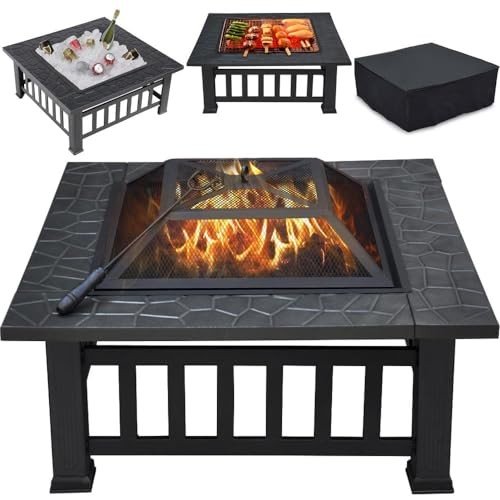Five Fireplace Lessons From The Pros
The Fireplace: A Warm Embrace of Tradition and Comfort
Fireplaces have been an integral part of human habitation for centuries, serving as a source of heat, an event location, and a sign of comfort. While the modern variations might differ incredibly from their ancient forefathers, the appeal of a fireplace sustains. This article checks out the numerous aspects of fireplaces, including their history, function, types, and upkeep, while also dealing with frequently asked questions.
The Evolution of Fireplaces
Fireplaces go back to prehistoric times when open flames were used for cooking, heating, and protection from wildlife. Over Fireplaces Online , fireplaces progressed from basic fire pits to the sophisticated performances we see today. Here is a brief timeline of their development:
- Prehistoric Era: Cavemen utilized open flames for heat and cooking. Wind and smoke often blew into homes.
- Middle Ages: Stone and brick fireplaces ended up being common in homes and castles, including chimneys to carry smoke outside.
- Renaissance: Elaborately designed mantels emerged, and fireplaces became centers of social interaction.
- Industrial Revolution: Innovations in heating materials resulted in a variety of designs and functionalities.
- Modern Era: The arrival of gas, electric, and bioethanol fireplaces supplied cleaner options to traditional wood-burning systems.
Table 1: The Evolution of Fireplaces
Period
Attributes
Prehistoric Era
Open flames for warmth and cooking
Middle Ages
Stone and brick structures with early chimneys
Renaissance
Ornate mantels, social centers
Industrial Revolution
Diverse styles, arrival of new products
Modern Era
Gas, electric, and bioethanol options
The Purpose of a Fireplace
Fireplaces serve dual functions: they supply physical warmth and create an emotional environment. House owners frequently gather around the fireplace to bond, share stories, and enjoy a cozy setting. The glow of a fire can be calming, adding to a sense of relaxation and intimacy. Beyond personal satisfaction, fireplaces also use practical advantages, including:
- Home Heating: Effective heat source, particularly in colder environments.
- Increased Home Value: A well-designed fireplace can boost the visual value of a home.
- Emergency situation Heating: In case of power outages, wood-burning fireplaces can serve as a crucial heat source.
- Visual Appeal: A centerpiece that adds to interior decoration.
Kinds of Fireplaces
Today, fireplaces are available in various styles and fuel types, accommodating a varied variety of preferences and settings. Here are some common types:
Wood-Burning Fireplaces:
- Traditional fire pits
- Timeless masonry fireplaces
- Need considerable maintenance and chimney maintenance
Gas Fireplaces:
- Available in both direct vent and ventless varieties
- Simpler to utilize and maintain than wood-burning fireplaces
- Supply immediate heat with a flick of a switch
Electric Fireplaces:
- Offer associated heat sources without genuine flames
- Frequently designed to simulate traditional fireplaces
- Perfect for smaller sized spaces and homes without a chimney
Bioethanol Fireplaces:
- Use bioethanol fuel, supplying a sustainable option
- Require no ventilation and can be put anywhere
- Safe and easy to preserve
Table 2: Types of Fireplaces
Type
Fuel Source
Features
Maintenance Requirements
Wood-Burning
Wood
High atmosphere, heat source
Routine chimney cleansing
Gas
Gas or propane
Instant heat
Minimal, periodic maintenance
Electric
Electrical energy
Easy setup
Extremely low upkeep
Bioethanol
Bioethanol fuel
Ventless, portable
Low, generally cleaning up
Upkeep and Safety Considerations
Owning a fireplace includes certain duties, especially regarding its safe operation and long-term upkeep. Here are essential maintenance suggestions and safety guidelines:
Maintenance Tips:
- Annual Inspection: Always have your chimney and fireplace examined a minimum of as soon as a year by a certified service technician.
- Regular Cleaning: Clean out ashes and particles after each usage, and guarantee the flue is open before beginning a fire.
- Check for Cracks: Inspect masonry for fractures or damage to avoid structural concerns.
- Usage Proper Fuel: Only use dry, skilled wood for wood-burning fireplaces; do not burn treated wood.
Safety Guidelines:
- Install Smoke Detectors: Ensure smoke alarm are functional, testing them regular monthly and replacing batteries as needed.
- Keep a Fire Extinguisher: Have one close-by, even if a fireplace is utilized infrequently.
- Monitor Flames: Never leave a fire unattended, and guarantee kids and pets are monitored around the fireplace.
Regularly Asked Questions (FAQs)
1. How can I lower smoke from a wood-burning fireplace?
To minimize smoke, usage dry, experienced wood, and make sure that your chimney is tidy and unobstructed.
2. Is Fireplace Deals UK to utilize gas fireplaces during a gas leak?
Never ever utilize a gas fireplace throughout a gas leak. Instantly leave the location and contact gas services for aid.
3. Can I set up an electric fireplace myself?
Electric fireplaces are normally simple to set up, but it is suggested to seek advice from professionals to ensure safety and compliance with local building regulations.
4. What is the very best kind of fireplace for small spaces?
Electric fireplaces or bioethanol designs are often best for small spaces, as they do not need substantial ventilation or structural modifications.
Fireplaces have transcended their initial function of offering heat to become cherished elements of home design and family life. They stimulate memories of warmth, events, and togetherness while offering practical advantages that enhance modern living. By understanding the different kinds of fireplaces, their maintenance, and safety practices, property owners can delight in the timeless appeal of this cherished function for generations to come.
